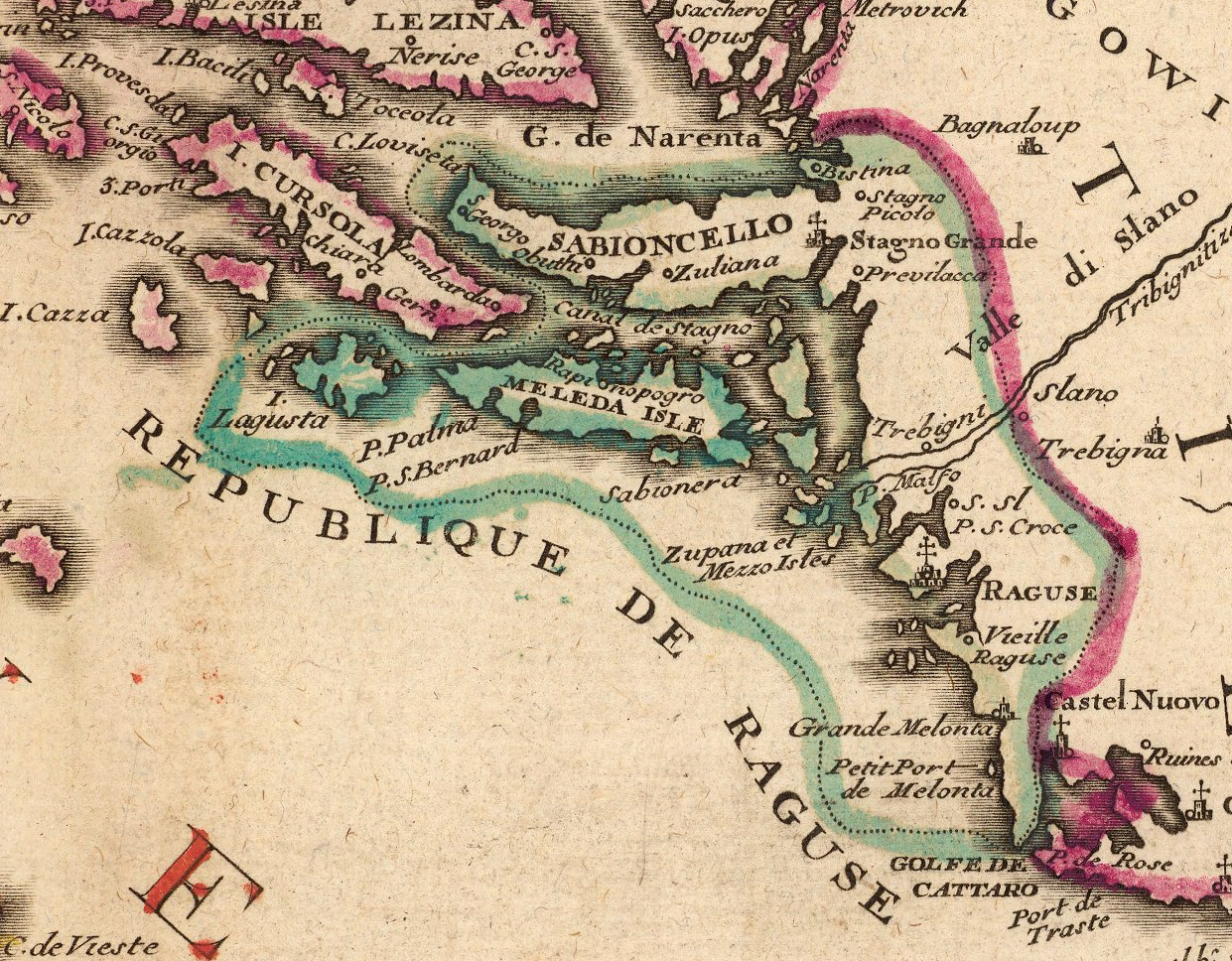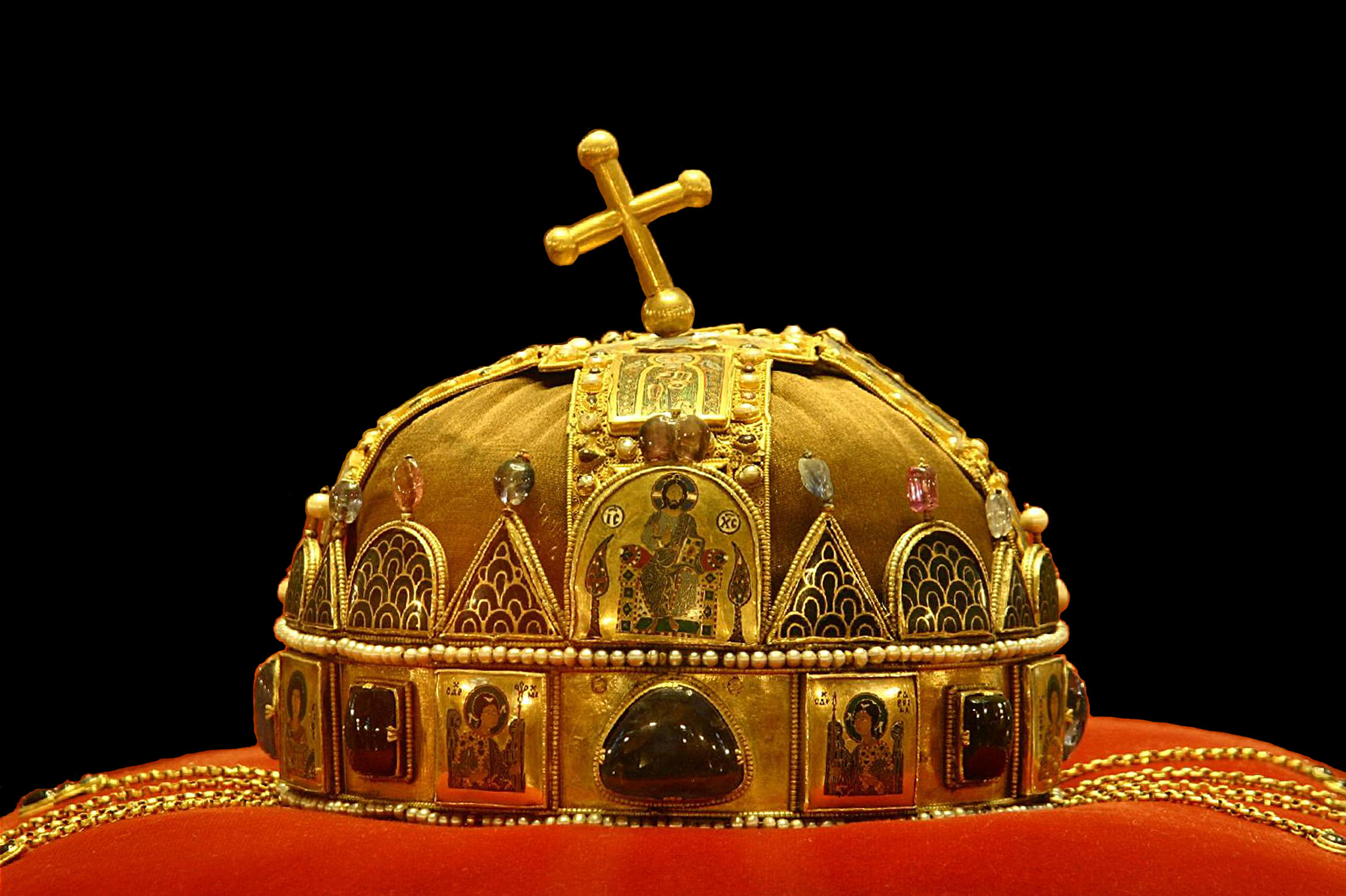|
Petar Kovačević
Petar Kovačević ( sr-Cyrl, Петар Ковачевић; ?? — 1455) was a duke from the Bosnian Dinjčić noble family, which had its estates in the eastern parts of the medieval Bosnian state, in the Jadar region. He was the son of Kovač Dinjčić. Petar was one of the most prominent members of the Dinjčić dynasty. He was accepted as a citizen of Dubrovnik on 27 July 1440. In the great Christian coalition against the Ottomans, he allied with the despot Đurađ Branković. The great Christian coalition was led by the Hungarian king Vladislav I and Janko Hunyadi, the lord of Transylvania. The army numbered 25,000 Hungarian and 8,000 Serbian horsemen, including 700 of Peter's Bosnian horsemen. Together with the despot Đurđe Branković, he captured Srebrenica in 1443, but he soon abandoned Serbian despot and in 1455 he attacked him and Srebrenica on order of his king, Stjepan Tomaš. He was killed in this battle by the Serbians and one document records it with the words ... [...More Info...] [...Related Items...] OR: [Wikipedia] [Google] [Baidu] |
Dinjčić Noble Family
Dinjčić ( sr-Cyrl, Дињчић), sometime Dinjičić ( sr-Cyrl, Дињичић), later branch known as Kovačević, were Bosnian medieval noble family which flourished during kingdom period, and ruled the Jadar-Drinjača areal and wider Srebrenica region. Family's founder is considered to be Dinjica, who flourished during 14th century. He had four sons, Dragiša, , and . Coat of Arms The family coat of arms is described in every iteration of the Illyrian Armorials, such as Fojnica Armorial at page 59. It depict a dragon motif above the helmet, in the crest. It also belongs to the Kovačević branch, which is evident from the comments. , uvodni tekst fra Franje Miletića, Franj ... [...More Info...] [...Related Items...] OR: [Wikipedia] [Google] [Baidu] |
Jadar Region , a flatland area central to Rogaland, Norway
{{disambig, geo ...
Jadar may refer to: * Jadar (Drina), a river in western Serbia, tributary to the Drina * Jadar (Drinjača), a river in eastern Republika Srpska, Bosnia and Herzegovina, tributary to the Drinjača * (''Cold Jadar''), a river in eastern Republika Srpska, Bosnia and Herzegovina, tributary to Jadar (Drinjača) * Jadar (Serbia), a region surrounding the Jadar river in western Serbia * Jadar (mineral), sodium lithium boron silicate hydroxide * Jadar, Yemen * Jæren Jæren is a Districts of Norway, traditional district in Rogaland county, Norway. The other districts in Rogaland are Dalane, Ryfylke, and Haugalandet. Jæren is one of the 15 districts that comprise Western Norway. At about , Jæren is the large ... [...More Info...] [...Related Items...] OR: [Wikipedia] [Google] [Baidu] |
Kovač Dinjčić
Kovač ( sh-Cyrl, Ковач) is a surname derived from the Proto-Slavic word kovač, which translates to blacksmith. It is common across Europe, specifically countries in Southeast Europe such as Bosnia and Herzegovina, Croatia, Serbia, and Slovenia. Kovač is a common surname in Croatia, with 9,614 carriers (2011 census), most of them living in northern and eastern parts of the country. The surname is one of the most common surnames in five counties of Croatia. It is common in Serbia, with 8,749 people bearing it. In Slovenia, some 4,800 have this surname. Outside Europe, the surname is fairly common in the United States (especially Texas and California), Canada, and South America. The surname Kovács is the Hungarian loanword of this word, and is one of the most frequent surnames in Hungary. The Romanian form is Covaci, and it is also a relatively frequent surname in Romania. The derivative forms Kovačić or Slovenian Kovačič, as well as Kovačević and Bulgarian Kovac ... [...More Info...] [...Related Items...] OR: [Wikipedia] [Google] [Baidu] |
Republic Of Ragusa
The Republic of Ragusa, or the Republic of Dubrovnik, was an maritime republics, aristocratic maritime republic centered on the city of Dubrovnik (''Ragusa'' in Italian and Latin; ''Raguxa'' in Venetian) in South Dalmatia (today in southernmost Croatia) that carried that name from 1358 until 1808. It reached its commercial peak in the 15th and the 16th centuries, before being conquered by Napoleon's First French Empire, French Empire and formally annexed by the Kingdom of Italy (Napoleonic), Napoleonic Kingdom of Italy in 1808. It had a population of about 30,000 people, of whom 5,000 lived within the city walls. Its motto was "'", a Latin phrase which can be translated as "Liberty is not well sold for all the gold". Names Originally named ' (Latin for "Ragusan municipality" or "community"), in the 14th century it was renamed ' (Latin for ''Ragusan Republic''), first mentioned in 1385. It was nevertheless a Republic under its previous name, although its Rector was appointed b ... [...More Info...] [...Related Items...] OR: [Wikipedia] [Google] [Baidu] |
Ottoman Empire
The Ottoman Empire (), also called the Turkish Empire, was an empire, imperial realm that controlled much of Southeast Europe, West Asia, and North Africa from the 14th to early 20th centuries; it also controlled parts of southeastern Central Europe, between the early 16th and early 18th centuries. The empire emerged from a Anatolian beyliks, ''beylik'', or principality, founded in northwestern Anatolia in by the Turkoman (ethnonym), Turkoman tribal leader Osman I. His successors Ottoman wars in Europe, conquered much of Anatolia and expanded into the Balkans by the mid-14th century, transforming their petty kingdom into a transcontinental empire. The Ottomans ended the Byzantine Empire with the Fall of Constantinople, conquest of Constantinople in 1453 by Mehmed II. With its capital at History of Istanbul#Ottoman Empire, Constantinople (modern-day Istanbul) and control over a significant portion of the Mediterranean Basin, the Ottoman Empire was at the centre of interacti ... [...More Info...] [...Related Items...] OR: [Wikipedia] [Google] [Baidu] |
Despot (court Title)
Despot or ''despotes'' () was a senior Byzantine court title that was bestowed on the sons or sons-in-law of reigning emperors, and initially denoted the heir-apparent of the Byzantine emperor. From Byzantium it spread throughout the late medieval Balkans and was also granted in the states under Byzantine cultural influence, such as the Latin Empire, the Second Bulgarian Empire, the Serbian Empire and its successor states ( Bulgarian and ), and the Empire of Trebizond. With the political fragmentation of the period, the term gave rise to several principalities termed "despotates" which were ruled either as independent states or as appanages by princes bearing the title of despot; most notably the Despotate of Epirus, the Despotate of the Morea, the Despotate of Dobruja and the Serbian Despotate. In modern usage, the word has taken a different meaning: "despotism" is a form of government in which a single entity rules with absolute power. The semantic shift undergone by the te ... [...More Info...] [...Related Items...] OR: [Wikipedia] [Google] [Baidu] |
Đurađ Branković
Đurađ Vuković Branković ( sr-Cyrl, Ђурађ Вуковић Бранковић, ; 1377 – 24 December 1456) served as the Serbian Despot from 1427 to 1456, making him one of the final rulers of medieval Serbia. In 1429, Branković was formally granted the Byzantine title of ''Despot'' by Emperor John VIII Palaiologos. Like many Christian rulers in Eastern Europe at the time, his rule was marked by Ottoman vassalage. Despite this, he often sought to strengthen Christian alliances while maintaining the appearance of loyalty to the Ottoman Empire. Branković is also remembered for constructing the Smederevo Fortress in the city of Smederevo, which became the last capital of medieval Christian Serbia. Despot Đurađ died in late 1456. Following his death Serbia, Bosnia, and Albania fell under the dominance of Sultan Mehmed II. During his reign Đurađ amassed a significant library of Serbian, Slavonic, Latin, and Greek manuscripts and made Smederevo a hub of Serbian culture. H ... [...More Info...] [...Related Items...] OR: [Wikipedia] [Google] [Baidu] |
Hungarian King
This is a list of Hungarian monarchs; it includes the Grand Prince of the Hungarians, grand princes (895–1000) and the King of Hungary, kings and ruling queens of Hungary (1000–1918). The Principality of Hungary, Hungarian Grand Principality was established around 895, following the 9th-century Hungarian conquest of the Carpathian Basin. The Kingdom of Hungary existed from 1000–1001 with the coronation of King Saint Stephen. The Árpád dynasty, the male-line descendants of Grand Prince Árpád, ruled Hungary continuously from 895 to 1301. Christianity was adopted as the state religion for the Kingdom of Hungary by King Stephen I of Hungary, Saint Stephen and the kings of the Árpád dynasty used the title of the Apostolic Majesty, apostolic king. The descendants of the dynasty gave the world the highest number of saints and blesseds from one family. Therefore, since the 13th century the dynasty has often been referred to as the "Kindred of the Holy Kings". The Árpád dynast ... [...More Info...] [...Related Items...] OR: [Wikipedia] [Google] [Baidu] |
Ladislaus I Of Hungary
Ladislaus I (, , , ; 1040 – 29 July 1095), also known as Saint Ladislas, was King of Hungary from 1077 and King of Croatia from 1091. He was the second son of King Béla I of Hungary and Richeza of Poland, Queen of Hungary, Richeza (or Adelaide) of Poland. After Béla's death in 1063, Ladislaus and his elder brother, Géza I of Hungary, Géza, acknowledged their cousin Solomon of Hungary, Solomon as the lawful king in exchange for receiving their father's former Duchy (Kingdom of Hungary), duchy, which included one-third of the kingdom. They cooperated with Solomon for the next decade. Ladislaus's Saint Ladislaus legend, most popular legend, which narrates his fight with a "Cuman" (a Turkic peoples, Turkic nomad marauder) who abducted a Hungarian girl, is connected to this period. The brothers' relationship with Solomon deteriorated in the early 1070s, and they rebelled against him. Géza was proclaimed king in 1074, but Solomon maintained control of the western regions of his ... [...More Info...] [...Related Items...] OR: [Wikipedia] [Google] [Baidu] |
Hunyadi Family
The House of Hunyadi was one of the most powerful noble families in the Kingdom of Hungary during the 15th century. A member of the family, Matthias Corvinus, was King of Hungary from 1458 until 1490, King of Bohemia (ruling in Moravia, Lower Lusatia, Upper Lusatia, and Silesia) from 1469 until 1490, and Duke of Austria from 1487 until 1490. His illegitimate son, John Corvinus, ruled the Duchy of Troppau from 1485 until 1501, and five further Silesian duchies, including Bytom, Głubczyce, Loslau, Racibórz, and Tost, from 1485 until 1490. The Hunyadi coat-of-arms depicted a raven with a golden ring in its beak. The founder of the family, Voyk, received the eponymous Hunyad Castle (in present-day Hunedoara, Romania) from Sigismund, Holy Roman Emperor, Sigismund, King of Hungary, in 1409. His ethnicity is the subject of scholarly debate. Some modern historians describe him as a Vlach, or Romanians, Romanian, Knez (Vlach leader), knez or Boyars of Wallachia and Moldavia, b ... [...More Info...] [...Related Items...] OR: [Wikipedia] [Google] [Baidu] |
Transylvania
Transylvania ( or ; ; or ; Transylvanian Saxon dialect, Transylvanian Saxon: ''Siweberjen'') is a List of historical regions of Central Europe, historical and cultural region in Central Europe, encompassing central Romania. To the east and south its natural border are the Carpathian Mountains and to the west the Apuseni Mountains. Broader definitions of Transylvania also include the western and northwestern Romanian regions of Crișana and Maramureș, and occasionally Banat. Historical Transylvania also includes small parts of neighbouring Western Moldavia and even a small part of south-western neighbouring Bukovina to its north east (represented by Suceava County). Transylvania is known for the scenery of its Carpathian landscape and its rich history, coupled with its multi-cultural character. It also contains Romania's second-largest city, Cluj-Napoca, and other very well preserved medieval iconic cities and towns such as Brașov, Sibiu, Târgu Mureș, Bistrița, Alba Iuli ... [...More Info...] [...Related Items...] OR: [Wikipedia] [Google] [Baidu] |






